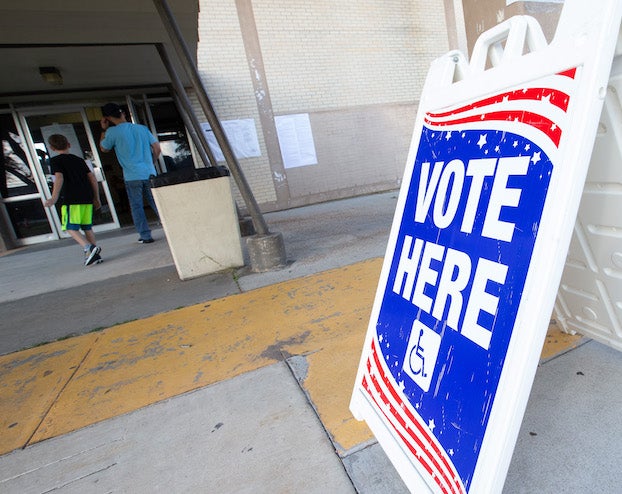A look at critical employment shortages in the healthcare industry
Published 7:35 am Sunday, April 9, 2023

- (Metro Creative Services)
A focus on education — as well as partnership between hospitals, schools and the government – could be the solution to the employment shortages in the healthcare industry.
Missy Sparks, vice president of Talent Management and Human Resources at Ochsner Health, addressed the reality of the current healthcare workforce situation.
There is a 3.2 million nurse shortfall nationwide, and rural Louisiana communities were some of the hardest hit areas, Sparks said.
“We continue to face an alarming shortage of nurses practicing in our communities, and it’s certainly an area where we recognize our rural and underserved communities throughout Louisiana.”
She said despite Ochsner Health’s efforts to counteract the shortages, there are 1,200 RN openings over 47 different Ochsner and partner organizations.
Shortages are occurring in other healthcare roles as well. Hospitals are also seeing a need for respiratory therapists, physicians and medical lab technicians and scientists.
Statistically, Louisiana will rank third nationwide in physician shortages by 2030; 37,000 to 124,000 physicians will be needed by 2034.
These staffing issues have not only decreased the quality of care that patients are receiving, but has also increased the cost of healthcare.
Sparks said that the increased labor costs – as a result of incentivizing healthcare professionals to stay in their current positions – drove the prices of care up. In order to meet the employment need, hospitals are relying on agencies to find nurses.
Because of this, it has been a “tug of war” trying to staff facilities, said Representative Dustin Miller, a nurse practitioner and a member of the House Health and Welfare Committee. “It’s causing all of the hospitals to pay more… the cost of healthcare is going to be more expensive.”
Currently, there are approximately 600 agency nurses working in Ochsner’s network. Before the pandemic, Sparks said there were 80 to 90 working at a time.
The nursing shortages caused by COVID-19, decreased enrollment and retiring nurses have been affecting hospitals nationwide, according to the American Association of Colleges of Nursing.
While healthcare staffing issues were becoming prominent before the pandemic, the stressors of COVID-19 created a more difficult work environment for nurses, leading to a higher rate of registered nurses leaving the profession.
In addition to nurses leaving due to pandemic stressors, many nurses are getting ready to retire. According to the 2020 National Nursing Workforce Survey, the average age for an RN is 52 years old. More than 1 million registered nurses will retire from the workforce by 2030.
The shortage issues have been exacerbated by the decrease in students pursuing degrees in the medical field.
Nursing school enrollment is not growing fast enough to meet the projected demand for RNA and APRN services, according to the American Association of Colleges of Nursing (AACN).
Wendi Palermo, Chief Education and Training Officer for the Louisiana Community and Technical College System (LCTCS), said that one of the best ways to combat the industry shortage is to beef up faculty in programs and universities that educate future healthcare professionals.
“In order to train those individuals, I need masters-prepared nurses and/or nurses to teach in the LPN space.”
Miller said that the faculty shortage has been discussed at the legislative level. “At lot of times at the capital we question, ‘Are we creating our own problems?’”
Louisiana’s criteria for nursing educators is more strict than national nursing accreditation bodies, he said. “If they don’t require all of these masters-prepared nurses, can we become more flexible so that we can hire more instructors so that we can get more kids in?”
Palermo said that “as a state, we turned away over 1,000 qualified nursing students” due to a lack of qualified nursing teachers.
According to the AACN’s report on 2021-2022 Enrollment and Graduations in Baccalaureate and Graduate Programs in Nursing, “U.S nursing schools turned away 91,938 qualified applications from baccalaureate and graduate nursing programs in 2021 due to insufficient number of faculty, clinical sites, classroom space and clinical preceptors, as well as budget constraints”
The solution to faculty shortages would be to allow nurses with a Bachelor’s of Science in Nursing to teach RN courses, she said.
Currently, instructors holding only a bachelor’s are able to teach in the LPN space. “We already have nurses with a baccalaureate degree who have decades of teaching experience and understand curriculum development.”
Previously, there was a 20 percent cap on the amount of nursing faculty members that can teach in the RN space with just a BSN.
Recently, this 20 percent cap was removed, allowing more nurses without a master’s to teach. It is required, however, that faculty members instructing with just a BSN pursue a master’s degree in the future.
LCTCS and Ochsner do provide scholarship opportunities for MSN students who commit to instructing courses after they earn their masters.
Another solution to offset the nursing shortage is get high school students interested in healthcare by helping them gain experience through a hands-on education.
Ochsner Health offers a LPN dual enrollment pilot program for high schoolers has been introduced in New Orleans — the TOPS University Pre-Apprenticeship: Nursing.
According to the Louisiana Department of Education, the apprenticeship allows students a chance to “gain knowledge, earn postsecondary credit and experience work-based learning on the way to becoming a Registered Nurse.”
After completing the pre-apprenticeship, students will have the opportunity to move into Ochsener’s state registered nursing apprenticeship and will graduate high school with only 1 semester of coursework needed to begin working.
The first round of students participating in the pilot program are currently in their junior year of high school, so evidence of the program’s efficiency should be apparent in two years, Sparks said.
Once the pilot program is scaled, Ochsner will be more than willing to partner with other schools to institute pre-apprenticeships in other areas, Sparks said. “That model can be recreated across the state in any area.”
“We recognize that what we are trying to do is build the overall pool,” she said. “The talent pool needs to be there so that our patients across the state can be served.”





